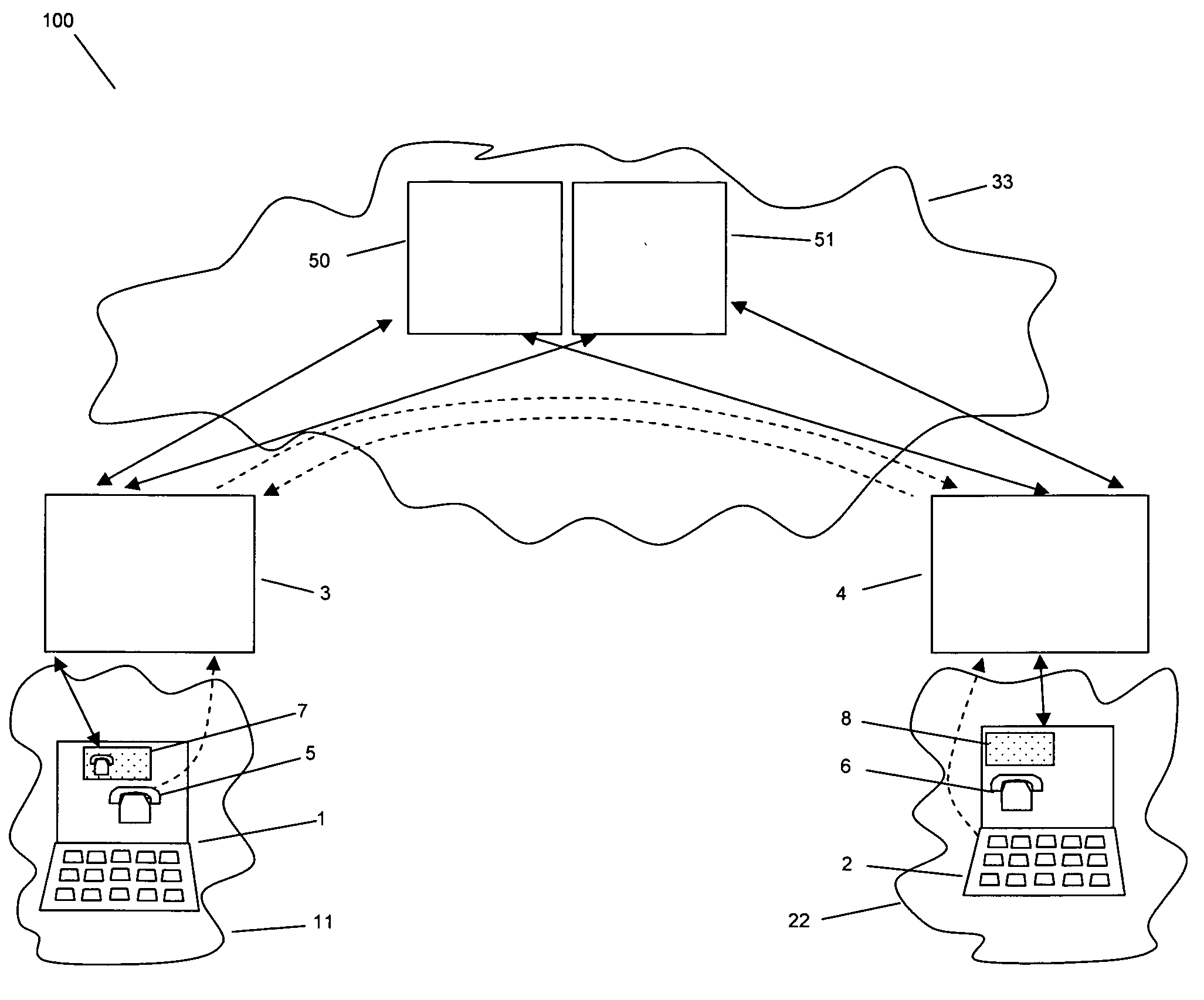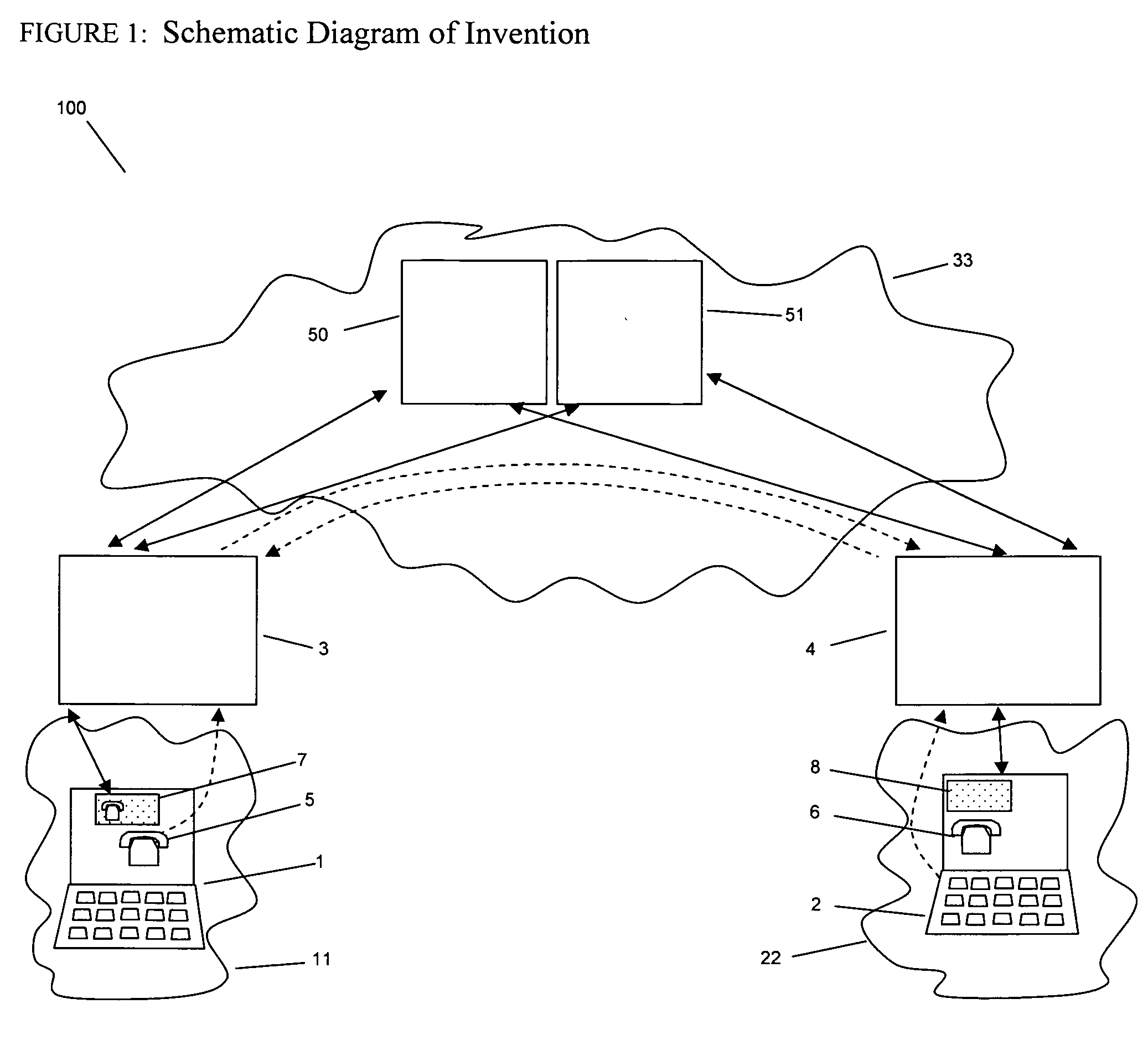Method for the initiation of a shared computer session
a shared computer and session technology, applied in the direction of multiple digital computer combinations, electric digital data processing, instruments, etc., can solve the problems of not being able to understand the procedural steps of users, the procedure is tedious for users, and the remote computer cannot be remotely controlled
- Summary
- Abstract
- Description
- Claims
- Application Information
AI Technical Summary
Benefits of technology
Problems solved by technology
Method used
Image
Examples
Embodiment Construction
[0022]The invention underlies the problem of a method for the initiation of a computer session which is shared by two computers connected via internet so that there is no need for a costly relay server and so that users do not need to execute tedious procedures in order to start desktop sharing sessions with:[0023]a communication software, preferably an IP telephony software running on both computers that allows the method running on both computers to exchange data via relay server at any time[0024]discovery of the local IP addresses and open ports by the method running on both computers[0025]discovery of the global IP addresses and ports of the NAT router by contacting a server in the WAN that is specifically designed for this purpose[0026]transfer of the discovered IP addresses and ports via the IP telephony communication software which in turn transfers the information via the relay server to the respective peer, so that detailed information about how to address the respective pe...
PUM
 Login to View More
Login to View More Abstract
Description
Claims
Application Information
 Login to View More
Login to View More - R&D
- Intellectual Property
- Life Sciences
- Materials
- Tech Scout
- Unparalleled Data Quality
- Higher Quality Content
- 60% Fewer Hallucinations
Browse by: Latest US Patents, China's latest patents, Technical Efficacy Thesaurus, Application Domain, Technology Topic, Popular Technical Reports.
© 2025 PatSnap. All rights reserved.Legal|Privacy policy|Modern Slavery Act Transparency Statement|Sitemap|About US| Contact US: help@patsnap.com


